Read Touring Cuba: Part 1 here.
As we left the maze of streets that make up Camaguey we headed north to Cubitas and then west on 123 through Esmeralda to Morón. We then headed north through the small village of San Rafael which led us to the causeway out to Cayo Coco, an all-inclusive resort frequented mostly by Canadians.
It was a wonderfully warm day with just enough of a breeze to feel good riding along the ocean. With hardly a cloud in the sky it was easy to be mesmerized by the experience of being in a heretofore forbidden place doing what we all love to do—ride bikes.
To understand the all-inclusive resort we were about to visit it is important to understand how this entire island paradise came to be in stark contrast to the surrounding poverty and lack of societal niceties. Herein lies a short history lesson that is pivotal to understanding Cuba and the tenacity that runs through its people. In the 90’s the Cold War was escalating and it became impossible for Russia to continue to prop up the Cuban economy. Prior to this Russia would pay four to five times value for sugar, tobacco and any other export Cuba had, including natural resources. When Russia pulled out virtually overnight the entire economy of Cuba collapsed. The people were thrown into poverty that none of us could imagine. Imagine your stores with bare shelves and no hope of them being restocked. If you grew it or raised it you could eat. Otherwise good luck. This time in Cuba was called the “special period” and lasted into the early 2000s. You may also recall that at the same time we (USA) strengthened our embargo of goods to Cuba. None dared to defy the embargo—except Canada. The Canadian government shipped goods and provided services to the Cuban regime and this would be the saving grace for the people of Cuba.

Out of respect for the defiance of the American embargo Fidel began building the Cayo Coco complex. It was intended to be a respite of pristine beaches and pampered service to repay the Canadians for helping Cuba survive the “special period.” To this day a Canadian tourist can fly from Canada to Cayo Coco and stay for 10 days for $900 all in. So as Paul Harvey would say, “That is the rest of the story.”

We encountered our only rain as we began departing Cayo Coco. It was severe enough to delay our start but also put us in a position of arriving in Santa Clara after dark. Riding in Cuba after dark is not advised! We traveled west on 151 to Chambas and Caibarien. From there we headed to Camajuani and ultimately Santa Clara.
Even though we arrived after dark it was obvious the accommodations for the night were special. Each of us had a spacious cabana located a safe distance from the bar and restaurant. Santa Clara is the geographic center of Cuba. Its main claim to fame is a spectacular rock festival called “Ciudad Metal.” The other reason you might hear of this town is because it was liberated by Che Guevara in December 1958, which started the downfall of the Batista regime and paved the way for Fidel to take power.

The story of the Batista defeat is legendary and must be told. Several hundred Batista soldiers were on a train to smother the revolt. Che had 24 men armed with pistols. He tore up the railroad tracks with a nearby bulldozer in an effort to derail the train. He then had his men fill Coca-Cola bottles with gas and make Molotov cocktails. As the train derailed, Che’s men tossed the fiery cocktails into the wood-lined railroad cars, catching them on fire. Batista’s soldiers came running out and threw down their weapons allowing Che to capture all 300 soldiers. The legend of Che Guevara was born, and is revered to this day. As we visited the memorial we were surrounded by the very bulldozer used in the raid and the railroad cars still in disarray on the tracks. Nothing like living history.

On to Cienfuegos we went. It was a simple trip taking A1 and Carretera Central de Cuba to Esperanza, and then 112 south to Cienfuegos. It was a very warm day so we were thrilled to get to our hotel early and enjoy the ocean breeze with a Mojito and a Cohiba. Life is good.
Cienfuegos was built by Batista’s brother in the 1950s. It has been referred to as the “Cuban Paris” because of its French spirit and Caribbean flamboyance. Set right on the ocean it has spectacular vistas supported by flourishing industry, commercial fishing and vibrant arts and entertainment. In short I think a guy could get in a lot of trouble here if he had too much free time. We did not.

By this time we were getting pretty tired and looked forward to our lastpush toward Havana. It was an easy ride up CS to Aliza, Rodas, Aguada de Pasajeros and then A1 all the way to Havana. We got there just about lunchtime and Luis took us to a new brewery on the waterfront, which had great beer and very tasty Cuban sandwiches. The market was close by so we had an hour to shop for souvenirs. We toured Havana on the bikes but Luis had a special surprise for us. He had arranged a visit to a local biker watering hole in the bowels of Havana. The draw became obvious once we got there. We were warmly greeted by Ernesto Guevara, Che’s son. What a thrill to yack with him for a while, take pics and look at all the memorabilia hanging on the walls. Most prominent was Che’s 50’s Harley used to traverse South America back in the day.

A fitting end to the day was our last supper. Luis had arranged and prepared a Cuban feast of roast pig and all the traditional Cuban sides. We sat totally exhausted yet invigorated. We ate. We smoked Cohibas. We drank wine. We drank rum. We talked and hugged like families do. This is the way we left Cuba, feeling like we had become part of a very special family bonded by motorcycles. As it should be!
Perhaps the ability to visit Cuba will become more available in the future. If it does, get off the beaten path, meet people, see and feel what most will not. Ignore socioeconomic status and enjoy the pride Cuban people feel for this special place. It will change you.


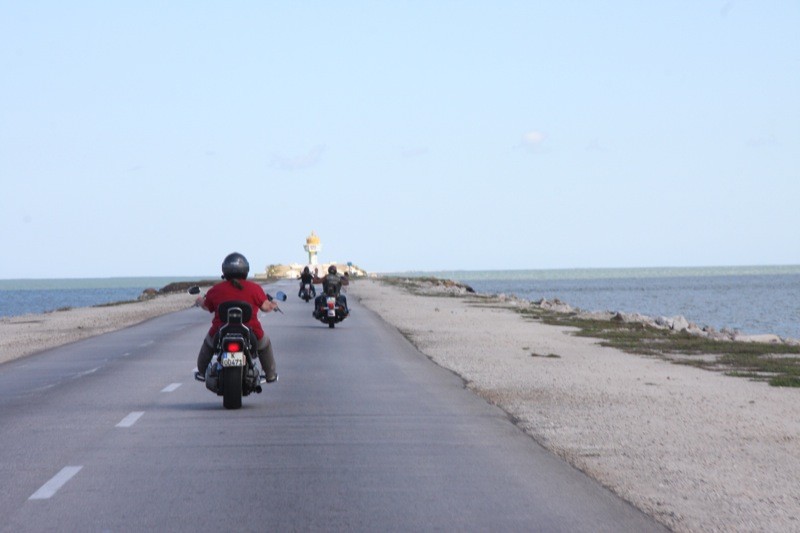
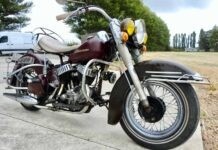

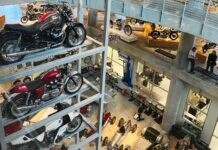
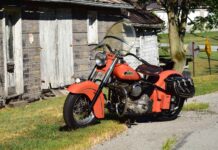
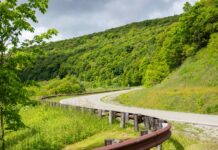











[…] Click here to read Part 2. […]